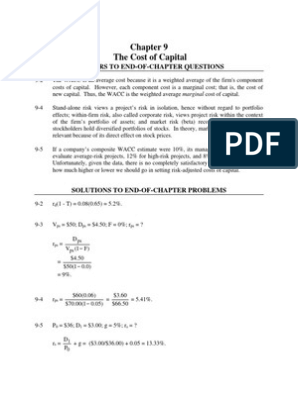0% found this document useful (0 votes)
13 views2 pagesMCC
The document presents a Marginal Cost of Capital (MCC) schedule for a hypothetical company, detailing its capital structure with debt, equity, and preferred stock. It outlines breakpoints for switching to more expensive capital sources and emphasizes the importance of selecting projects with an Internal Rate of Return (IRR) that meets or exceeds the MCC. The MCC schedule aids in making informed investment decisions based on financing costs.
Uploaded by
afshanaminCopyright
© © All Rights Reserved
We take content rights seriously. If you suspect this is your content, claim it here.
Available Formats
Download as DOCX, PDF, TXT or read online on Scribd
0% found this document useful (0 votes)
13 views2 pagesMCC
The document presents a Marginal Cost of Capital (MCC) schedule for a hypothetical company, detailing its capital structure with debt, equity, and preferred stock. It outlines breakpoints for switching to more expensive capital sources and emphasizes the importance of selecting projects with an Internal Rate of Return (IRR) that meets or exceeds the MCC. The MCC schedule aids in making informed investment decisions based on financing costs.
Uploaded by
afshanaminCopyright
© © All Rights Reserved
We take content rights seriously. If you suspect this is your content, claim it here.
Available Formats
Download as DOCX, PDF, TXT or read online on Scribd
/ 2














































































